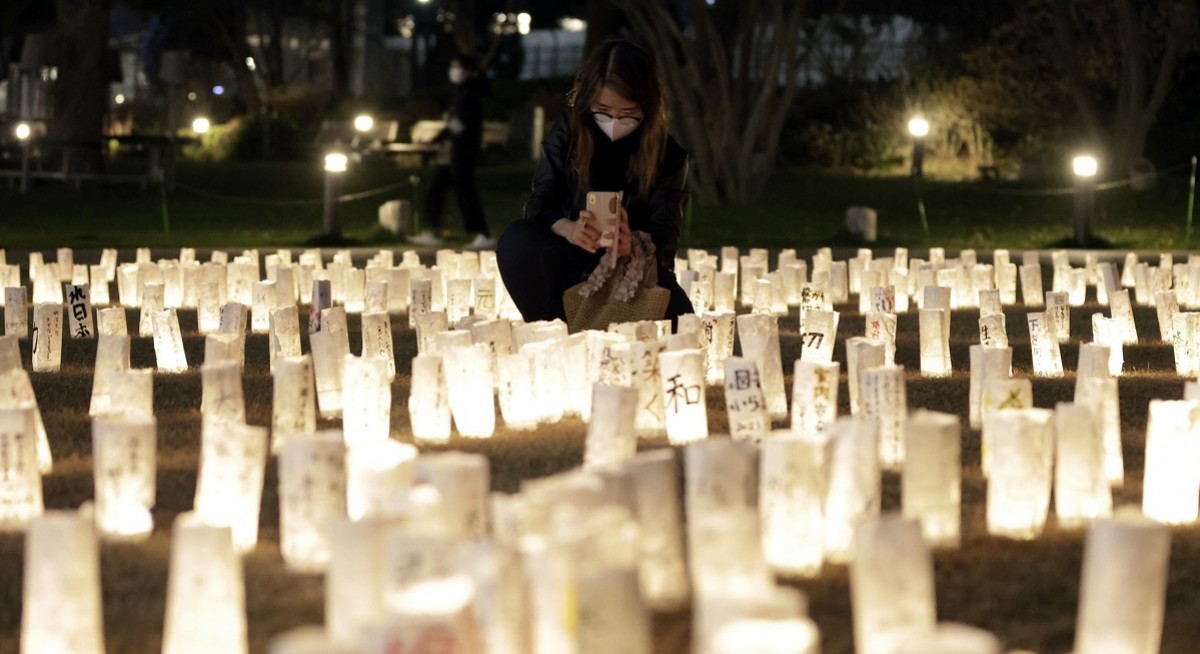Prime Minister Fumio Kishida is set to push not just for the restart of operations including Tokyo Electric Power Co’s Kashiwazaki-Kariwa, the largest nuclear power facility in the world — he’s also looking to reverse a decade of policy and mull the building of new nuclear plants. The country will also consider extending the lifespan of existing reactors beyond the current 60 years.
This has been coming: After scares earlier this year, Japan is facing another winter where electricity demand is expected to be right up against supply. The reality is dawning that it can’t oppose Russian energy, climate change and nuclear power all at once.
But the about-face is striking nonetheless. Just last year, the energy ministry’s basic plan called for “reducing dependency on nuclear as much as possible.” While Kishida has previously embraced restarting existing units, building new ones presents entirely different challenges. For a premier whose popularity is already plummeting, Kishida won’t find it easy to convince the public to stop worrying and love nuclear power again.
Japan was previously a staunch, if initially unlikely, proponent of nuclear power, viewing it as the solution to reducing its dependency on foreign energy. In the space of just 20 years, nuclear became the country’s primary source of electricity generation, helping to fuel the post-oil-crisis stage of its economic miracle. By the turn of the millennium, it provided more than a third of the nation’s power.
See also: Floods: Indonesia targets companies as death toll surpasses 800
The 1999 criticality accident (a limited self-sustained nuclear chain reaction) at the Tokaimura plant and the 2007 earthquake that shook Kashiwazaki-Kariwa beyond its design specifications had already muted enthusiasm for nuclear power. Then came the tsunami and meltdown at Fukushima Dai-ichi. Naoto Kan, the left-leaning prime minister at the time, ordered the abrupt shutdown of the distant Hamaoka nuclear plant. Tens of thousands marched against nuclear power in Tokyo in the biggest protests the country had seen for decades; the likes of SoftBank Group Corp founder Masayoshi Son lined up to join the anti-nuclear movement.
In a little over a year, all of Japan’s nuclear plants were offline. Nuclear’s share of the energy mix collapsed to zero, and the use of liquefied natural gas and coal surged; thermal power made up nearly 90% of generation in 2014. Today just six of the nation’s 33 operable reactors are running.
Behind Kishida’s change of heart lies a mix of public opinion and geopolitics. Russia’s war on Ukraine has thrown into doubt the future of the Sakhalin-2 natural gas venture, critical to Japan’s LNG supply. Amid the resulting rising cost of electricity, fears of blackouts and concern over climate change, voters have started to shift. Earlier this year, a majority polled by the Nikkei newspaper said they supported nuclear restarts for the first time since Fukushima.
See also: Deadly floods’ US$20 bil toll shows Asia’s rising climate risk
Opposition may be weakening, but recently there’s been little to oppose. Until this week, Japan’s ruling party expressed scant willingness to do more than restart the nation’s stalled fleet. Japan hasn’t built a new reactor since before Fukushima: Three are in theory currently under construction, with another six in the planning stages, but work seems stalled with operators giving no timeline for when any of them might come online.
That stands in contrast not just to the building frenzy of the past, but to the surge of building elsewhere in Asia. India plans to triple its nuclear lineup over the next 10 years; in China, officials aim to build at least 150 reactors in the next 15 years. South Korea is also set to make four more reactors by 2030.
Japan won’t be able to match that frenetic pace, but it will be determined not to repeat the folly of Germany, where politicians are now attempting to back out of a nuclear exit ahead of an energy crunch this winter. With no neighbour it can borrow energy from, Japan’s options are limited.
In Japan and South Korea, nuclear is often the most cost-effective way of powering a new electricity generator. Thanks to unusually high local costs for wind and solar, atomic energy is the cheapest option on the table — and extending the operating life of existing nuclear plants, not to mention those that were suspended following the Fukushima disaster, is cheaper still.
But the challenges are immense. Both national and local support are required. Public opinion might back restarting reactors that have gone through the arduous approval process, but extending the lifespan of current ones will require an entirely separate debate. Is the public really ready to trust Tepco with operating a nuclear plant so close to a fault line? Getting support for new reactors will be the biggest challenge of all, with finding communities to host one already a challenge even before Fukushima.
Kishida should be applauded for taking these challenges on. As the most prominent politician from Hiroshima, the first city to suffer attack by an atomic bomb, he’s an unlikely face for the nuclear movement. But just as with his support for increased defense spending, his background gives him cover for an idea that other politicians would find a hard sell. Now the difficult part begins. - Bloomberg Opinion




